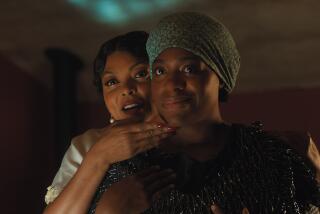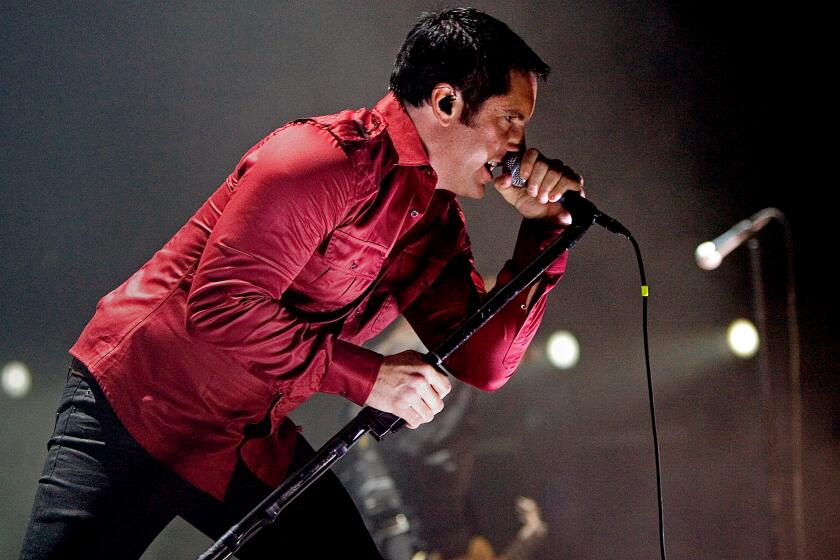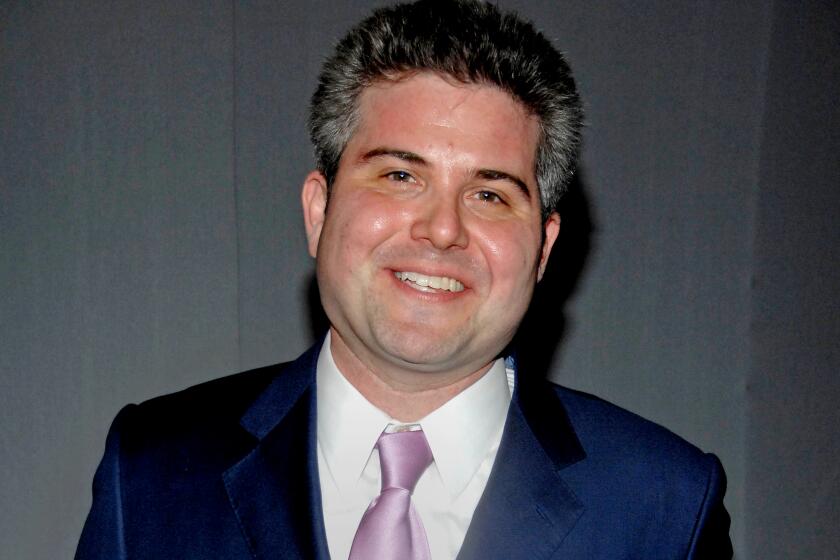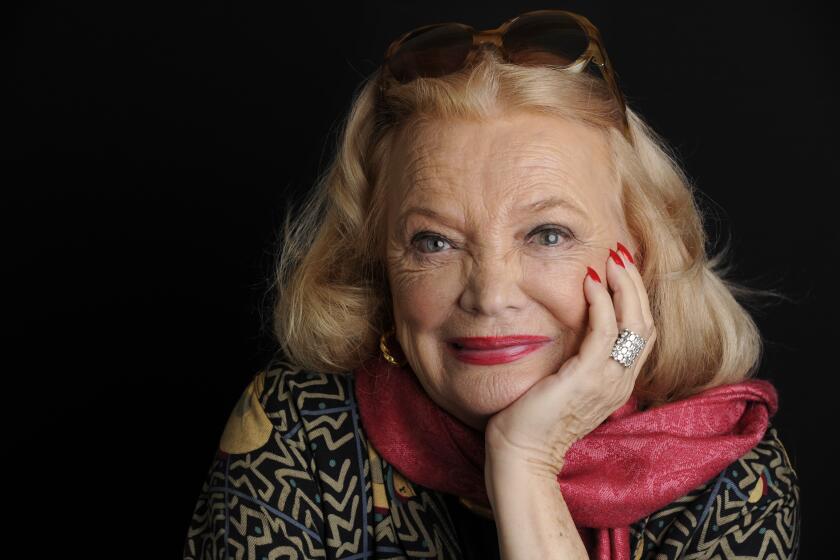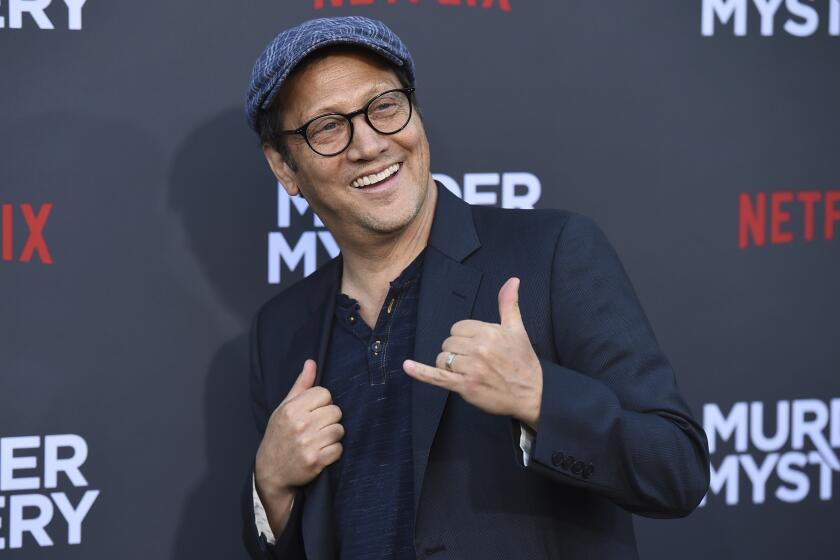Movie Reviews : ‘The Shadow’: The Look Says It All : Exciting visuals help bring film to life, but able actors can’t make the writing right.
In his six decades as a bulwark against evil, a certain high-profile crime fighter has survived confrontations with the Red Blot and the Gray Fist, the Condor and the Cobra, the Vindicator, the Voodoo Master and the Silent Seven. After all that, surviving “The Shadow,” the film that carries his name, shouldn’t be too difficult.
Actually, there are times when this action-adventure starring Alec Baldwin as the man with the all-knowing laugh seems on its way to not only surviving but also prospering. Set largely in a mythical, dreamlike New York between the wars, it has the benefit of a combination of gorgeous production design (by Joseph Nemec III) and eye-catching visual effects (supervised by Alison Savitch). If ever a film looked exactly the way you hoped and imagined it would, “The Shadow” is it.
But if ever a film made you wince whenever its actors opened their mouths, “The Shadow” is that as well. Determined to follow the treacherous tongue-in-cheek path of the glib “Batman” movies, “The Shadow” winks strenuously and continuously at the audience, forcing its cast to struggle with the flat witticisms that litter David Koepp’s script like so many expired balloons.
Between the early 1930s and the mid-1950s, the Shadow was a respected fixture on the American popular culture scene. A pulp magazine detailed his exploits for 18 years, a radio program (that briefly starred Orson Welles) did the same for more than 20, and there was exposure in feature films, comic books and even board games.
The key figure in all of this was the hard-working Walter Gibson, who under the pen name Maxwell Grant wrote 283 Shadow novels totaling something like 15 million words. Although he is mentioned only at the tail end of an extended credits crawl, it was Gibson who thought up the film’s villain, Shiwan Khan, “the Master of Oriental Nemesis,” several of its key characters, as well as the broad outlines of a plot about a madman using a stolen scientific device to threaten world domination.
What the movie does come up with on its own is a back story detailing how Lamont Cranston became the Shadow. Baldwin’s character is introduced as Ying Ko, the Butcher of Lhasa, a ruthless drug lord with long fingernails and a yen to control the entire opium output of Tibet.
*
But Ying Ko is abducted by a powerful and altruistic holy man known as the Tulku, who teaches the secret of clouding men’s minds and helps him to struggle against the darkness in his own spirit. Thus equipped, Ying Ko heads back home to New York and a double life as the wealthy socialite Cranston and the relentless Shadow.
It is in New York that the film’s ravishing look really kicks in. Working with cinematographer Stephen H. Burum, costume designer Bob Ringwood and three art directors, production designer Nemec dazzles in every single scene, creating atmospheric city streets, elegant nightclubs and knockout interiors that are characterized by a carefully thought-out use of detail. Not even the original “Batman” or the gaudy “Dick Tracy” managed to look this breathtaking this consistently.
Once Shiwan Khan (John Lone), a rogue pupil of the Tulku’s and the last living descendant of the great Genghis, shows up in Manhattan, “The Shadow’s” extensive use of special effects comes into greater play. Ten separate companies contributed their skills, coming up with such nifty tricks as forms materializing out of fire, a wonderfully elaborate Shadow message service and a knife with an evil mind of its own.
Keeping all of this moving is director Russell Mulcahy, himself a visual technician known for his music videos and the loud and tedious “Highlander.” Although he is still uncertain in handling actors, Mulcahy, a lifetime Shadow fan, overall does the best job of his career, orchestrating explosions and broken glass so that they meld with the rest of the picture instead of overwhelming it.
But just as Cranston has to fight against the crasser side of his nature, so “The Shadow” must contend with the unfortunate way the film has been dramatically imagined. Not surprisingly, it is a losing battle.
*
From “Star Wars” through “Batman,” the camping up of pulp material has become a genre in itself, and giving the script assignment to the derivative Koepp, who has made a nice career (“Jurassic Park,” “Carlito’s Way,” “The Paper”) out of crafting reasonable facsimiles of previously successful material, probably seemed like the smart money decision.
But writing truly wised-up repartee is harder than it looks, and, like a small boy scrawling graffiti on a monument, the dialogue in “The Shadow” consistently undercuts the wonderful mood the visuals have worked so hard to create.
Except for Jonathan Winters as police commissioner Wainwright Barth, the actors are understandably flummoxed by the script’s self-conscious cutesiness. Baldwin, Lone and Penelope Ann Miller as the glamorous Margo Lane continually struggle for the right tone, while Tim Curry as a mad scientist gives up the fight and goes totally over the top. And what could have been a classic ends up yet another story of what might have been.
* MPAA rating PG-13 for “fantasy action violence.” Times guidelines: assorted bloodless shootings, a near-drowning and a vicious computer-generated knife.
‘The Shadow’
Alec Baldwin: Lamont Cranston/The Shadow
John Lone: Shiwan Kahn
Penelope Ann Miller: Margo Lane
Ian McKellen: Reinhardt Lane
Peter Boyle: Moe Shrevnitz
Jonathan Winters: Wainwright Barth
Tim Curry: Farley Claymore
A Bregman/Baer production, released by Universal Pictures. Director Russell Mulcahy. Producers Martin Bregman, Willi Baer, Michael S. Bregman. Executive producers Louis A. Stroller, Rolf Deyhle. Screenplay David Koepp. Cinematographer Stephen H. Burum. Editor Peter Honess. Costumes Bob Ringwood. Music Jerry Goldsmith. Production design Joseph Nemec III. Art directors Dan Olexiewicz, Steve Wolff, Jack Johnson. Set decorator Garrett Lewis. Running time: 1 hour, 52 minutes.
* In general release throughout Southern California.
More to Read
Only good movies
Get the Indie Focus newsletter, Mark Olsen's weekly guide to the world of cinema.
You may occasionally receive promotional content from the Los Angeles Times.


